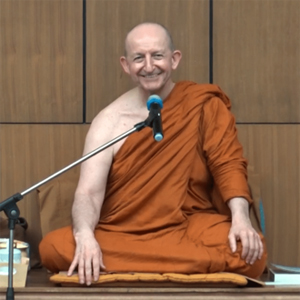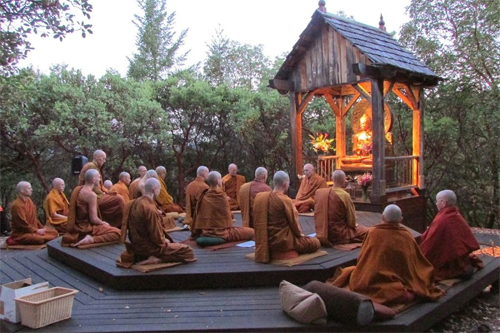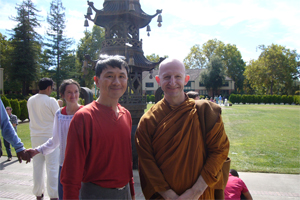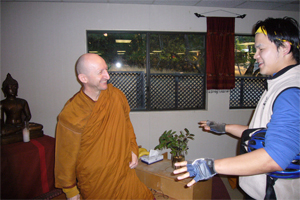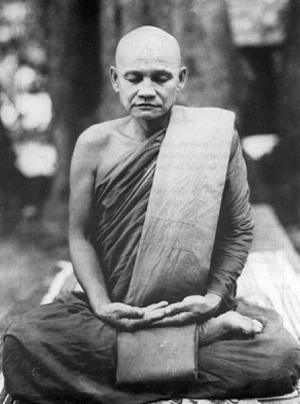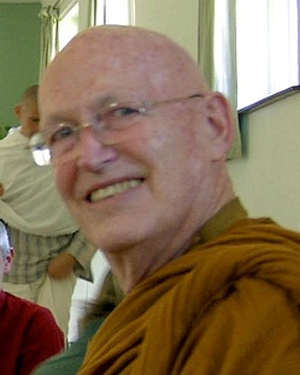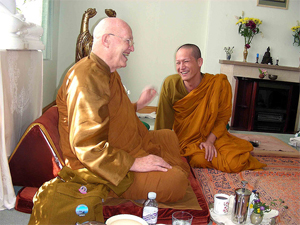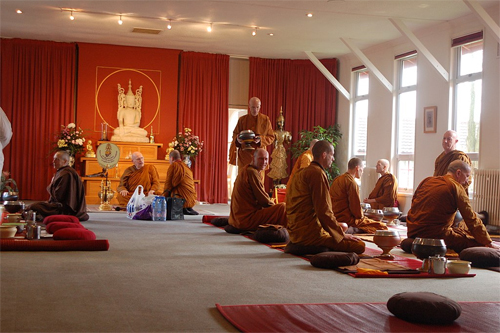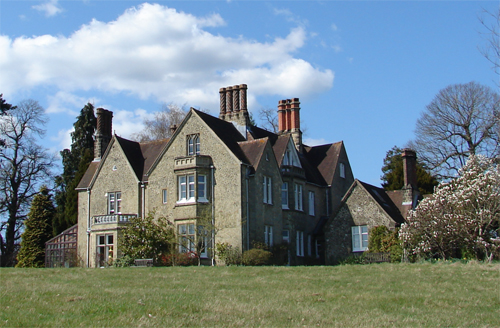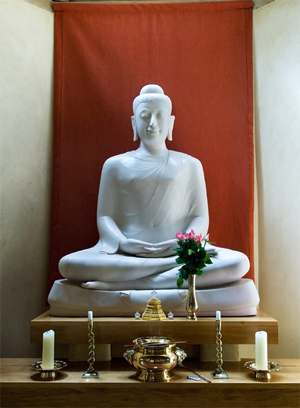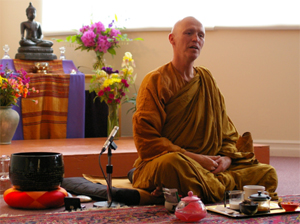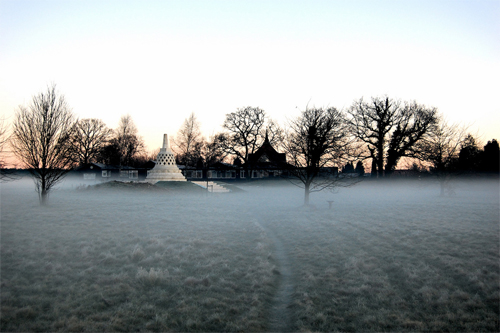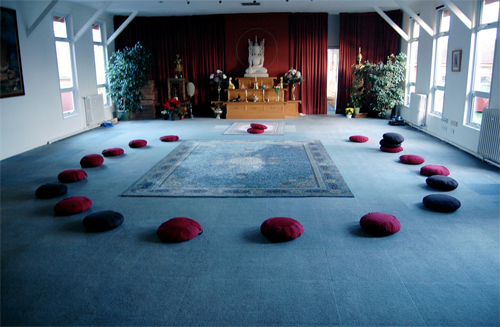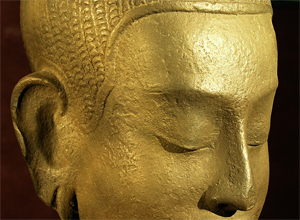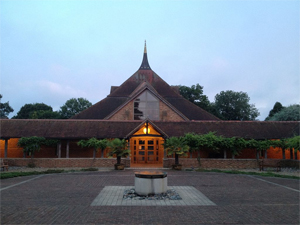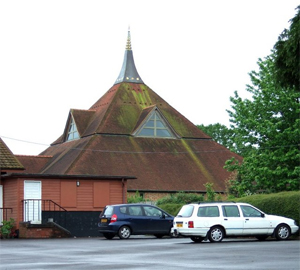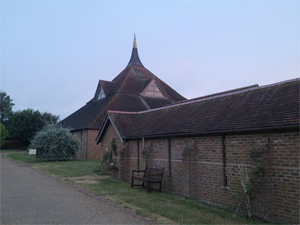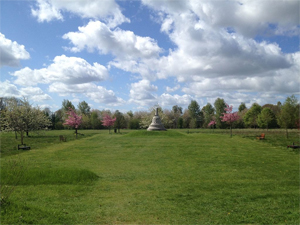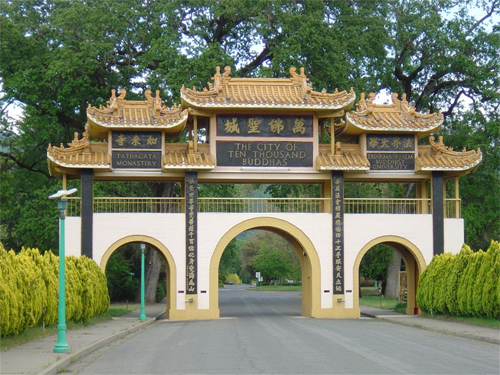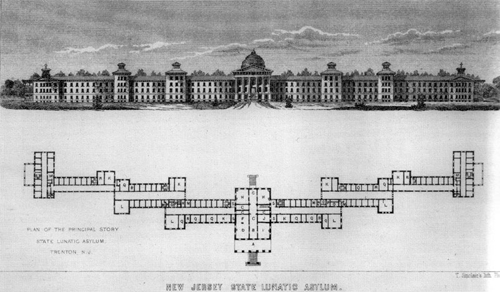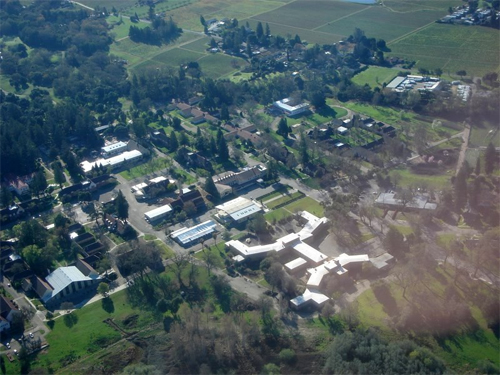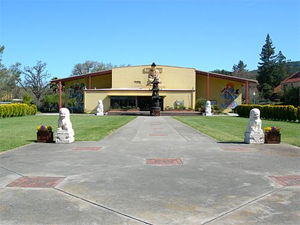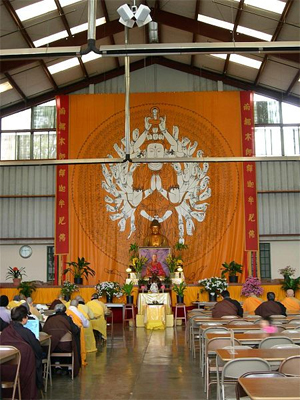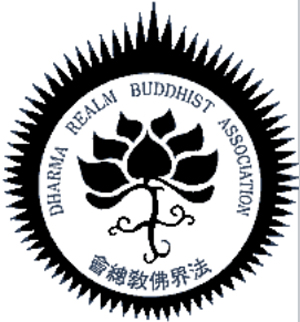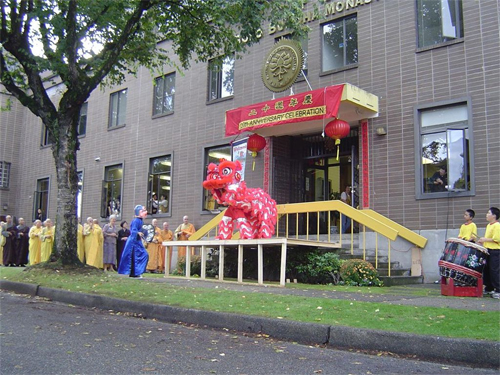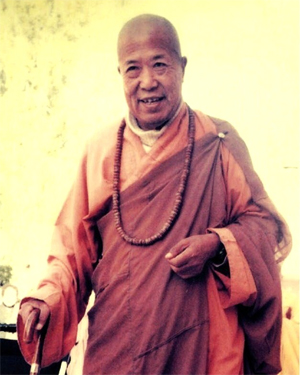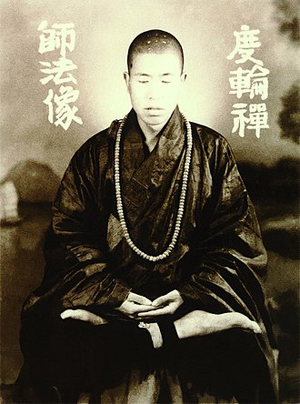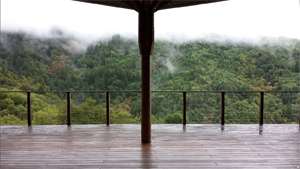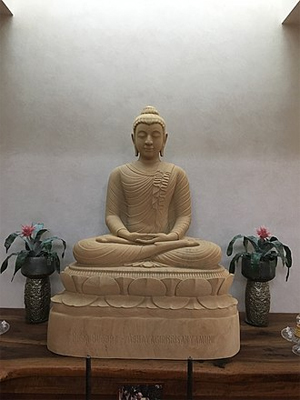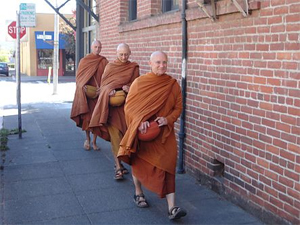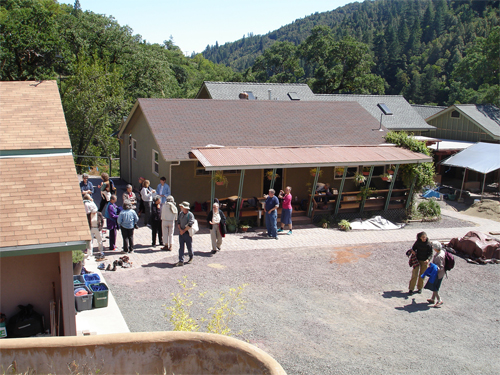by Wikipedia
Accessed: 8/9/20
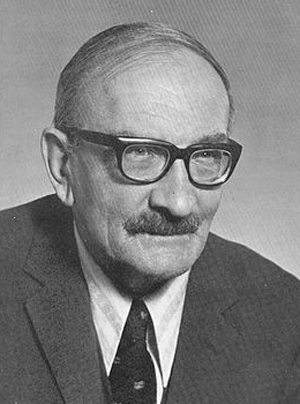
Edward Conze
Edward Conze, born Eberhard Julius Dietrich Conze (1904–1979), was an eminent scholar of Marxism and Buddhism, known primarily for his commentaries and translations of the Prajñāpāramitā literature.
Biography
Conze's parents, Dr. Ernst Conze (1872–1935) and Adele Louise Charlotte Köttgen (1882–1962), both came from families involved in the textile industry in the region of Langenberg, Germany. Ernst had a doctorate in Law and served in the Foreign Office and later as a judge.[1] Conze was born in London while his father was Vice Consul[2] and thus entitled to British citizenship.
Conze studied in Tübingen, Heidelberg, Kiel, Cologne and Hamburg. In 1928 he published his dissertation, Der Begriff der Metaphysik bei Franciscu Suarez, and was awarded a doctorate in philosophy from Cologne University.[3] He did post-graduate work at several German universities and in 1932 he published Der Satz vom Widerspruch (The Principle of Contradiction) which he considered his master work.[4] Because it was a Marxist work on the theory of dialectical materialism it attracted hostile attention from the Nazis and most copies were publicly burnt in a campaign conducted by the German Student Union in May 1933.[5] In the early 1930s Conze associated with and helped to organize activities for the Communist Party of Germany. When the Nazis came to power in 1933, he fled to Britain.[6][7]
In England, Conze taught German, philosophy, and psychology at evening classes, and later lectured on Buddhism and Prajñāpāramitā at various universities. However, the only permanent academic post he was offered had to be turned down because US immigration officials declined him a work permit on the basis of his past as a Communist.
A midlife crisis in 1941 saw him adopt Buddhism as his religion, having previously been influenced by Theosophy and astrology. He spent a brief period in the New Forest pursuing meditation and an ascetic lifestyle (during which he developed scurvy). At the end of this period he moved to Oxford where he began to work on Sanskrit texts from the Prajñāpāramitā tradition. He continued to work on these texts for the rest of his life.
Conze was married twice: to Dorothea Finkelstein and to Muriel Green. He had one daughter with Dorothea.
In 1979 Conze self-published two volumes of memoirs entitled Memoirs of a Modern Gnostic. Conze produced a third volume which contained material considered to be too inflammatory or libelous to publish while the subjects were alive.[8][9] No copy of the third volume is known to exist. The Memoirs are the principal sources for Conze's biography and reveal much about his personal life and attitudes.
Scholarship
Conze was educated in several German Universities and showed a propensity for languages. He claimed that by twenty-four, he knew fourteen languages.[10]
Conze's first major published work was on the theory of dialectical materialism. This continues to receive attention, with his book The Principle of Contradiction being reprinted in 2016.[11]
Following a mid-life crisis Conze turned to Buddhism and was particularly influenced by D. T. Suzuki. He made his name for his editions and translations of Sanskrit texts of the Buddhist Prajñāpāramitā literature. He published translations of all the principal texts of the genre, including the Aṣṭasāhasrikā (8000 Line), Ratnaguṇasamcayagāthā, Pañcaviṃśatisāhasrikā (25,000 Line), Vajracchedikā, and Prajñāpāramitāhṛdaya. All of these show the explicit influence of Suzuki's Theosophy infused Zen Buddhism.[citation needed]
A glance at a complete bibliography of Conze's oeuvre confirms that he was a man of industry and focus. His contribution to the field of Buddhist Studies, particularly of the Prajñāpāramitā literature, has had a major influence on subsequent generations.
Legacy
In his essay Great Buddhists of the Twentieth Century (Windhorse Publications: 1996), British writer and teacher of Buddhism, and personal friend of Conze's, Sangharakshita writes that "Dr. Conze was a complex figure, and it is not easy to assess his overall significance.... He was a self-confessed élitist, which is usually something people are ashamed of nowadays, but he wasn’t ashamed of it at all.... Nor did he approve of either democracy or feminism, which makes him a veritable ogre of ‘political incorrectness’." Nevertheless, Sangharakshita summarizes Conze's legacy as a scholar of Buddhism as follows:
Dr Conze was one of the great Buddhist translators, comparable with the indefatigable Chinese translators Kumarajiva and Hsuan-tsang of the fifth and seventh centuries respectively. It is especially significant, I think, that as a scholar of Buddhism he also tried to practise it, especially meditation. This was very unusual at the time he started his work, and he was regarded then – in the forties and fifties – as being something of an eccentric. Scholars were not supposed to have any personal involvement in their subject. They were supposed to be ‘objective’. So he was a forerunner of a whole new breed of Western scholars in Buddhism who are actually practising Buddhists.[12]
Ji Yun, Professor of the Buddhist College of Singapore, describes Conze's legacy as follows:
Even to this day, Edward Conze (1904-1979) the German British scholar has to be regarded, not as one of many, but as the most important researcher on Prajñāpāramitā literature. This genius of Buddhist linguist [sic.] and philologist devoted his whole life to the collation, translation and research of Prajñāpāramitā literature in Sanskrit, Tibetan and Chinese – a language relatively neglected by European scholars before him. Although the research of this prolific writer covers well beyond the Prajñāpāramitā category, his works dedicated solely to this, according to an incomplete count by the Japanese scholar Yuyama Akira 汤山明, include 16 books and 46 articles.... In the history of Prajñāpāramitā research Conze can be regarded as a formidable scholar with no comparison, suprpassing [sic.] all past and perhaps even future researchers in his achievement.[13]
Selected bibliography
For a complete bibliography of Conze's works see the website, Conze Memorial http://www.conze.elbrecht.com/
• 1932. Der Satz vom Widerspruch. Hamburg, 1932.
• 1951. Buddhism: Its Essence and Development.
• 1956. Buddhist meditation. London: Ethical & Religious Classics of East & West.
• 1958. Buddhist Wisdom Books: The Diamond Sutra and the Heart Sutra. George Allen & Unwin. Second edition 1976.
• 1959. Buddhist Scriptures. Haremondsworth: Penguin Classics.
• 1960. The Prajñāpāramitā Literature. Mouton. Second Edition: [Bibliographica Philogica Buddhica Series Maior I] The Reiyukai Library: 1978
• 1967. Materials for a Dictionary of the Prajñāpāramitā Literature. Tokyo, Suzuki Research Foundation.
• 1973. The Large Sutra of Perfect Wisdom. University of California Press.
• 1973. The Perfection of Wisdom in Eight Thousand Lines and its Verse Summary. San Francisco: City Lights, 2006.
• 1973. Perfect Wisdom: The Short Prajñāpāramitā Texts. Buddhist Publishing Group.
• 1975. Further Buddhist Studies: Selected Essays. Oxford, Bruno Cassirer
Notes
1. Heine 2016; Langenberger Kulturlexikon.
2. Humphreys 1980, p. 147
3. de Jong 1980, p. 143
4. Conze 1979
5. Heine 2016, xiv
6. Jackson 1981, pp. 103-104
7. Humphreys 1980, p. 147
8. Jackson 1981, p. 102
9. Houston 1980, p.92
10. Conze 1979: I 4
11. Heine 2016
12. Sangharakshita 1996
13. Yun 2017, 9-113
References
• Conze, Edward (1979). Memoirs of a Modern Gnostic. Parts I and II. Privately Published.
• de Jong, J.W. (1980). Edward Conze 1904–1979, Indo-Iranian Journal 22 (2), 143-146. – via JSTOR (subscription required)
• Heine, Holger (2016). 'Aristotle, Marx, Buddha: Edward Conze's Critique of the Principle of Contradiction', in Conze, Edward, The Principle of Contradiction. Lexington Books, pp. xiii–lxiii. First published in German as Der Satz vom Widerspruch. Hamburg, 1932
• Houston, G.W. (1980). Review: The Memoirs of a Modern Gnostic by Edward Conze, The Tibet Journal, 5 (1/2), 91-93. – via JSTOR (subscription required)
• Humphreys, Christmas (1980). Edward Conze, 1904-1979, The Eastern Buddhist (new series), 13 (2), 147-148. – via JSTOR (subscription required)
• Jackson, Roger R. (1981). Review: The Memoirs of a Modern Gnostic, Parts I and II (Edward Conze), Journal of the International Association of Buddhist Studies 4 (2), 102-105
• Langenberger Kulturlexikon: Immaterielles Kulturerbe der UNESCO. http://www.unter-der-muren.de/kulturlexikon.pdf
• Sangharakshita (1996). Great Buddhists of the Twentieth Century, Windhorse Publications
• Yun, Ji . 纪赟 —《心经》疑伪问题再研究, Fuyan Buddhist Studies no. 7 (2012): 115-182. Trans. Chin Shih-Foong, Is the Heart Sūtra an Apocryphal Text? – A Re-examination, Singapore Journal of Buddhist Studies (2017), 4: 9-113.

